Move Mind Benders Review
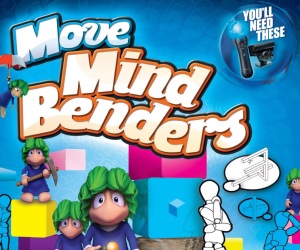 Game: Move Mind Benders
Game: Move Mind Benders
Developer: XDev Studio Europe
Publisher: Sony Computer Entertainment
Available on: PlayStation 3 only (Move required)
In twelve months, what has happened to the PlayStation Move? The Sony motion controller seems to have got itself a little stuck. 2011 has seen few, if any, big releases for the much-touted hardware which, rather than become an established peripheral, seems to be descending in freefall, now just a box feature for shooters like Resistance. Move should be luring new gamers and demographics to the PlayStation.
But is that to say that the Move has nothing going for it? Or are there some hidden away gems that could be lit up by Sony’s glowing wand if only consumers could get their hands on them? That is certainly the hope for Move Mind Benders, a package of three puzzle games, all designed specifically for the Move or tweaked to fit the motion control arena. Echochrome ii, Tumble and Lemmings are the games in question and they make for an intriguing package. Lemmings now has full Move support (as you might expect) and all the games have been beefed up with full 3D support.
How these games hold up and how they work together, is the key to this package’s success. Is Move about to surprise us by bringing its biggest guns out the closet, or is it stuck firing blanks?
Echochrome ii: One of Move’s most famous games, and probably the title in Move Mind Benders with the highest pedigree, Echochrome ii sees the player controlling a beam of light and manipulating shadows, creating trampolines, walkways and doors for the umbran character that must be guided to the exit.

Echochrome ii looks like an interactive Escher painting, all jutting angles, twisting space and perfectly ordered chaos. The game evokes this atmosphere of organised madness throughout, with its music pulled straight from a Sherlock Holmes investigation and graphics that feel like they were sketched out on yellowing graph paper. It is engrossing stuff.
Puzzling is interesting. The concept is wildly imaginative and the early puzzles, as light is manipulated and impossible bridges realised, is richly rewarding, offering the same sense of achievement is package-mate Lemmings. However, as time goes on and Lemmings continues to reward the player with a deserved sense of accomplishment, Echochrome ii takes a backward step.
It takes minutes until it is apparent that puzzles can be solved by simple guesswork. Like staring at a Magic Eye poster, if you just wave the wand long enough the answer will start to come together, the solution requiring no logic on behalf of the player and lessons learned in previous levels lost amongst the guesswork. It is this limitation that deadens the game as it progresses, leaving it the most stylish game in the package, with the best implementation of Move technology, but ultimately an inferior pure puzzle game to Lemmings.
With a vast quantity of levels, all available in three game modes, and a full and intuitive level creation package, Echochrome ii has got plenty for the player. Online leaderboards bring a competitive element (that only questionably fits in with the rest of the game) that also adds replayability. The core puzzling can be fun (if easily solved by guesswork and flailing with the controller) and this coupled with Echochrome’s unique style means that it is aged well since its release and takes its place as the most polished part of this package.
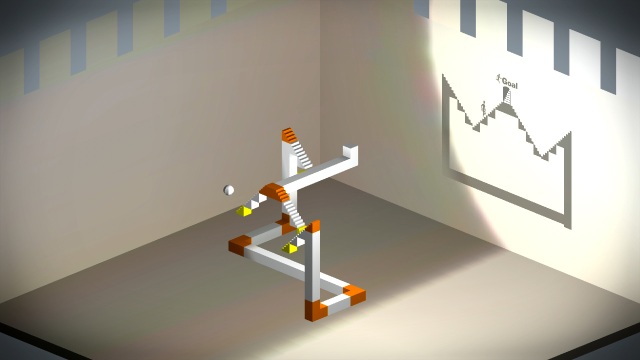
Tumble: The least well known of the trio, Tumble, is a Krypton Factor/Future Gameshow flavoured puzzler where the player uses the Move controller to build towers, stack blocks and blast columns apart with mines.
Originally released in 2010, Tumble offers single and multiplayer games with a variety of modes, all of which sound great whilst actually not being much fun at all. A typical Tumble level sees the player trying to build a tower using the Move wand to pick up and stack blocks. However, the motion controls vacillate from pin-point accurate to simply clumsy within a matter of seconds. It is still cool to see the on-screen controller precisely mimicking the exact position of Move in space, with quick wrist rolls and subtle movements tracked brilliantly, but the tendency for the controller to wander off, requiring a reset button and frequent calibrations, dulls the enjoyment and tests the patience of new gamers and the casual audience.
If the controls had been better implemented, this could have been a great showcase for Move’s very specific skillset.
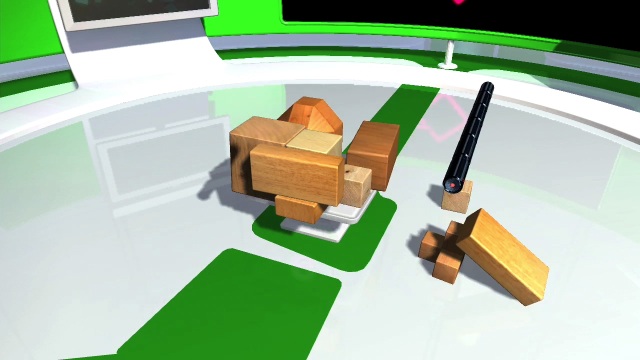
That wouldn’t have made this game any fun though. Stacking blocks is quite a shallow concept and the game proves this quickly, with levels becoming tiresome almost immediately and any desire to push forward evaporating with yet another samey challenge. Even when the game deviates, aiming for some more light-hearted fun in Destruction mode, it fails to really entertain. The physics mean that towers rarely blow apart with any gusto, collapsing pathetically as the mines explode like popping corn rather than plastic explosive.
A drab puzzler, with plodding multiplayer and a mis-firing example of Move control, Tumble is a visually solid but largely uninteresting tech-demo in downloadable game’s clothing and, despite being the only multiplayer piece of the package, it offers the least of all of the games.
Lemmings: The elder statesman is back. Lemmings should need no introduction and, mercifully, despite the transition to motion control and the PlayStation Move, motion controlled Lemmings still feels exactly like Lemmings should.
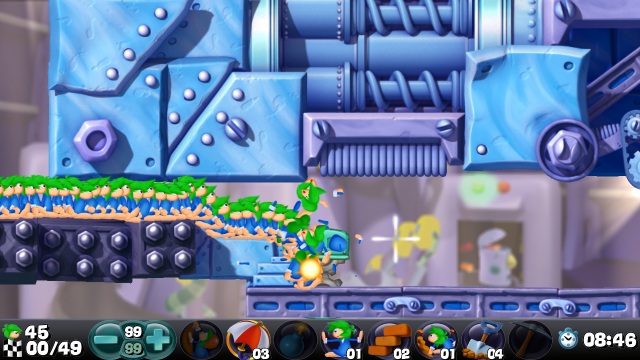
From Level One this is compulsive puzzling and proves that, beyond any doubt, a great idea is a great idea on any technology. That hasn’t stopped the development team tweaking the game and upping the challenge for both the new and the hardcore. In a change from the original game, many levels see the player start with almost no Lemming skills. Lemmings have to be manoeuvred around the map to collect the icons that allow players to create the builders, bashers and blockers that will be so familiar to fans of the series. Levels have been further bolstered by the inclusion of more traps but also items like teleporters, opening far more possibilities for the level designers and creating some puzzles that really test the player’s lemming saving skills. Other than the totally anti-climactic nuking animations, graphics and sound are charismatic and modern but instantly reminiscent of earlier games in the series.
The core Lemmings remains perfectly in tact, with all gameplay and design tweaks refreshing the formula whilst staying loyal to the series. However, the game isn’t great. Whilst the Move control, a simple point and click interface with scrolling mapped to the T button underneath the controller, is a massive improvement on trying to play Lemmings with a joypad, it still manages to be a fiddly experience. The Move acts as a pointer, with the cursor following the player’s every movement – and every is no exaggeration. The cursor twitches around violently with every slight tremor of the player’s hand, making precise placement of builders and blockers, a skill required even in early levels, a frustrating experience, with whole levels lost because of an inopportune heartbeat causing the Move controller to move 0.0001 of an inch and the cursor to jump out of place. It’s like turning off a camera’s image stabilization and then trying to take an in-focus photograph of a sprinting cheetah whilst riding on the back of an elephant. Too frustrating to be truly worth the effort, even if every so often it works perfectly.
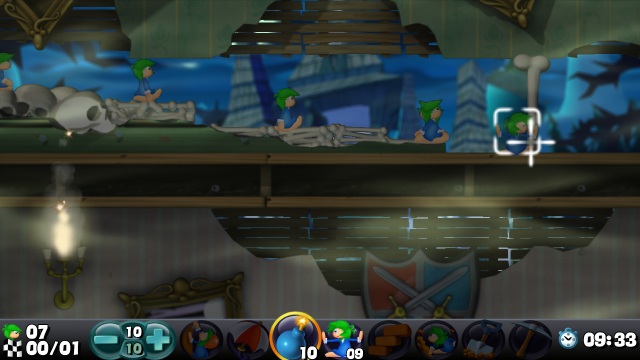
So despite a gorgeous difficulty curve, some terrific puzzles and a healthy dose of nostalgia, Lemmings is an imperfect use of Move technology and only a qualified recommendation in this format.
VERDICT: Things aren’t all doom and gloom. It is great to see Lemmings back. Despite being slightly the odd-one-out in an otherwise geometry-focussed package, the game retains a real character and charm to go along with its ever-wonderful puzzling. It is just a shame that the Move implementation is average, always feeling second-rate compared to the tidy precision of a mouse.
Echochrome ii and Tumble both have their faults too, despite some enjoyable moments. The package (like the games) feels haphazard and slapdash and this leaves Move Mind Benders, despite some good moments, feeling like a bad advert for a great idea. Hardly the sort of quality title that a player and consumer would expect for a controller that should still be striving hard to impress.





